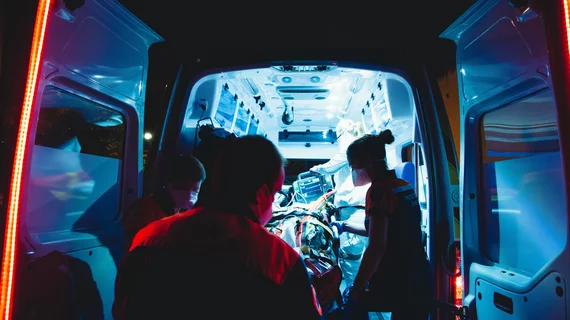Use of advanced imaging skyrockets in ED, and radiologists should be ready for more
The use of advanced imaging has skyrocketed in the emergency department, a trend that may continue in the coming years, researchers wrote Thursday in the Journal of the American College of Radiology [1].
In a single level 1 trauma center, imaging volumes per ED encounter leapt 5.5% for X-ray, 35.5% for CT and 56.3% among MRI during the eight years ending in 2021. Even at a lower acuity, level 3 trauma center, the numbers are striking: Imaging use climbed 10.4% for ultrasound, 74.6% across CT and 2% for MRI.
“There is a disproportionate increased utilization of advanced imaging, such as CT, over time,” lead author Neo Poyiadji, MD, with Henry Ford Hospital in Detroit, and co-authors concluded. “ED utilization trends suggest that there will be a continued increase in demand for advanced imaging interpretation, including at lower acuity hospitals; thus, radiology departments should prepare for this increased work demand.”
For the study, researchers retrospectively gathered data from two emergency departments within a major health system in southeast Michigan, spanning 2014 to 2021. They excluded any fluoroscopic exams, nuclear medicine, or imaging from interventional procedures. The study counted exams that imaged multiple body sections under one accession as a single service.
While many categories saw gains, ultrasound use in the level 1 trauma center dropped 5.9% during the study period, and radiography dipped 4.4% at the level 3 center. Total work relative value units, or wRVUs, increased both at the level 1 (34.9%) and level 3 (76.6%) trauma centers over the course of eight years.
Digging deeper into the numbers, computed tomography angiography use leapt 536.4% per ED encounter on the level 1 side and 1,669.1% in the level 3 trauma center. That’s because the institution implemented a “CTA for all” policy in July 2017 to improve large vessel occlusion detection across patients with acute stroke symptoms who presented within 24 hours of symptom onset. Meanwhile, MR angiography head and neck imaging volumes dropped at both locations, likely due to the CTA shift.
The much larger uptick in magnetic resonance imaging at the level 1 center (56% vs. 2%) may have, in part, been due to different ordering practices between the two locations. Neuroimaging is a big driver of MRI in the ED, with brain and spine volumes showing a marked increase during the study period.
The surge in imaging utilization is independent of increased patient volumes, “suggesting that other extrinsic drivers” contributed. Over the course of the study period, the percent of encounters resulting in admission did not change measurably, and it did not appear that increasing patient complexity was the culprit.
“There are many proposed factors that may contribute to the increase in imaging utilization in emergency departments. For example, increased demand for rapid turnover, fear of malpractice litigation, and ability to bypass preauthorization requirements for advanced imaging all may play contributing roles,” the authors noted. “Future studies evaluating differences in ordering providers, patient demographics and patient presentations may elucidate additional trends in ED imaging utilization.”
Read more about the study, including potential limitations, in JACR at the link below.

